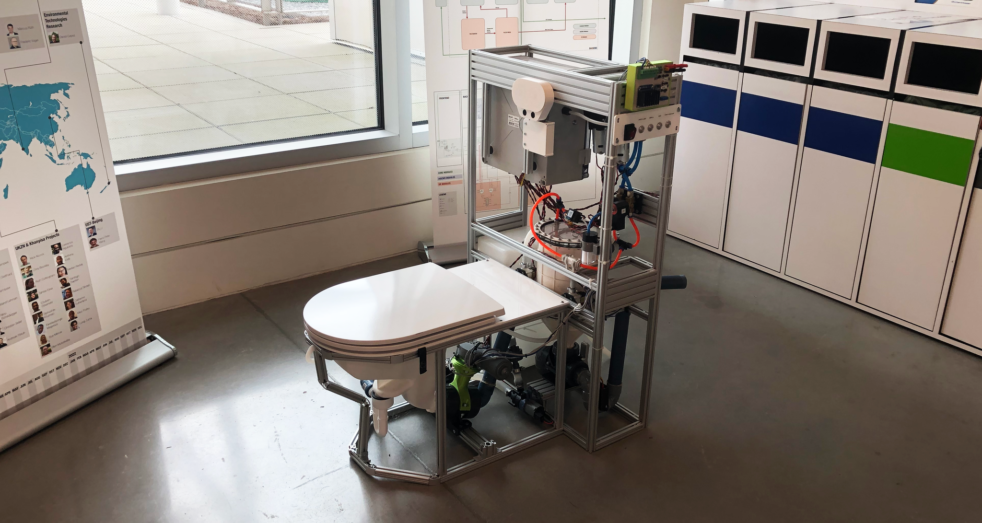The Kendeda Building is the hallmark of sustainability on campus, and the administrators of the building are constantly seeking new solutions to reduce energy and water waste. Soon, the Kendeda Building will host a new toilet prototype to make strides in wastewater management.
To be qualified as a living building, the Kendeda Building must meet certain requirements, called petals, to prove it gives more to the environment than it takes.
According to the building’s website, “[t]he Water Petal has only one imperative, Net Positive Water, which requires one hundred percent of occupant water to come from captured precipitation or closed loop water systems.”
This is achieved through collecting rainwater on site, managing runoff and handling waste water without connecting to a sewage system.
In the Kendeda Building, the latter is partially accomplished through the 12 composting toilets and four urinals on-site that handle blackwater, which is water with organic matter in it.
Students may have noticed the unusual toilets in the Kendeda Building but were not aware of their mechanisms.
“You have to use electricity, a little bit of water and soap as a disposable,” said Shannon Yee, associate ME professor and director of the Generation 2 Reinvent the Toilet (G2RT) program, an initiative sponsored by the Gates Foundation.
Shan Arora, director of the Kendeda Building, explained the process of using the current toilets as just making a deposit and letting the foam soap carry it away to collection bins in the basement.
Arora also mentioned some shortcomings of the current system.
“It’s a solution that only works in buildings five stories or less, which is most buildings in the world,” Arora said.
“You can’t retrofit. You have to have designed the building around the room where all this poo and pee ends up.”
This allows the current toilets to be practical in a space like the Kendeda Building, but not elsewhere.
“This is a horrible solution in a high traffic area because you have to change your behavior on how much [toilet paper] you use,” Arora said about the problems that can make the toilets stop up. “The only thing we’ve changed from a maintenance perspective in this building is the custodial staff go through the bathroom more often [to clean the toilets].”
While the current toilets do save some water and energy, their limitations impede their application worldwide.
This prompted Yee and a global team of researchers to design a new sustainable toilet that will be more accessible to people around the world.
“There are about 4.5 billion people on this planet that do not have access to improved sanitation,” Yee said.
Arora also discussed how much electricity is required to treat wastewater and produce drinking water, with around 30-40% of Dekalb and Fulton counties’ energy going towards water treatment facilities.
The extensive circumstances around sanitation and drinking water around the world inspired Yee and others to act, leading to the G2RT project.
Working with a global team of scientists and engineers, they have designed two working prototypes, with one model recently being installed in the Kendeda Building.
“The goal here is to make it look and operate exactly like a conventional toilet,” Yee said about the prototype. “You do not have to change anything about your behavior.”
The new toilet uses only 0.2 liters of water, 30 times less than a conventional toilet in the United States, and uses only one kilowatt hour of energy per day.
Yee explained the toilet has a weak vacuum system to clean it and pull waste down, which it then separates into liquids and solids.
The prototype in the Kendeda Building then uses pasteurization and mechanical dewatering to treat the waste.
The toilet yields clean water from urine and other liquids and produces dried solids from feces that can be put in the compost or burned for fuel.
Yee also mentioned that the toilet can accommodate multiple bathroom cultures around the world, including bidet use, toilet paper use or squatting.
A model of the toilet is currently being shown on the second floor of the Kendeda Building and a working model is installed in another room that will be open to use in the coming weeks.
Arora also stated that he would love to install the new toilets once they have commercialized and use the current composting room in the Kendeda Building for other purposes.
“This is a solution that touches half of the world’s population,” Yee said, “and Georgia Tech [is] leading a global collaboration.”
